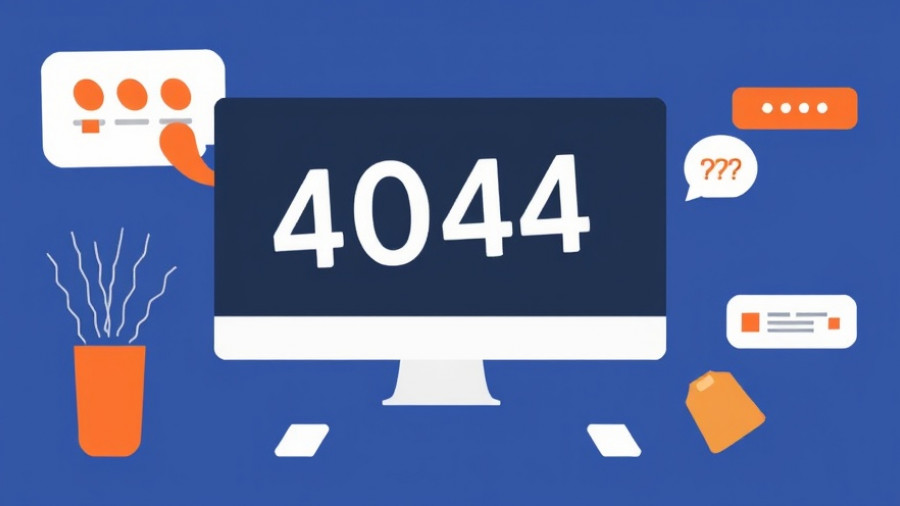
Why Are Businesses Facing Increased 404 Errors from ChatGPT?
In the age of artificial intelligence, navigating the web can sometimes feel like traversing a maze with hidden cornerstones that can trip you up. While AI tools like ChatGPT provide valuable insights and assistance, they also bring challenges, notably the influx of 404 errors. Recent studies have shown that ChatGPT directs users to broken web pages nearly three times more often than Google. A staggering statistic, over 3% of visitors sent from ChatGPT land on 404 pages rather than productive content.
This phenomenon, termed "phantom URLs," arises because ChatGPT does not crawl the web like standard search engines. Instead, it predicts web patterns based on previously gathered data. This can lead to the generation of links that sound legitimate but do not exist. As Dan Hinckley, co-founder of Go Fish Digital, points out, it’s not merely a minor inconvenience; these phantom links can cost businesses potential customers and erode user trust, leading to significant SEO risks.
Understanding the Financial Impact of 404 Referrals
404 errors aren’t merely a nuisance; they represent lost opportunity costs for businesses, affecting their bottom lines. When users click on a broken link, they often leave without exploring the site further, meaning businesses lose potential leads and sales.
Given that John Mueller from Google indicated that these hallucinated links might spike significantly before settling down, it’s imperative for site owners to address these issues proactively. With approximately 18,000 landing pages analyzed, the data suggests upwards of 3.35% lead to 404 pages. Thus, if a business is receiving significant traffic from AI tools, it ought to take these statistics seriously.
Strategies to Identify and Optimize for ChatGPT 404 Referrals
Addressing the phantom URLs created by ChatGPT requires diligence and strategic planning. Here’s a step-by-step guide to help businesses identify and confront these elusive 404 errors:
- Audit Your Google Analytics: The first step is to dive into Google Analytics 4 (GA4) where businesses can detect ChatGPT-generated 404 referrals. Navigate to Reports → Life cycle → Engagement → Pages and screens to analyze the data. Save the report for quick access to track visitors effectively.
- Optimize Your 404 Page: Businesses should ensure that their custom 404 pages provide Value. Consider adding links to popular or relevant content, offer a search bar, or guide users toward their primary services or offerings.
- Decide on Redirects Wisely: Google advises against redirecting numerous phantom URLs to irrelevant pages, as this could dilute the quality of the site. Instead, redirect where viable, guiding users to pertinent content whenever possible.
Looking Forward: Future Predictions and Opportunities
As AI technology continues to evolve, the challenge of 404 referrals may diminish. Improvements in AI link generation could lead to fewer broken links in the future. However, businesses shouldn’t wait idly for change; they should use this time to fortify their strategies around 404 errors. Adapting to deliver a better user experience will ultimately prove invaluable.
While the current statistics might signal distress, they also offer an unparalleled opportunity for businesses. Enhancing their digital strategy, improving web performance, and driving user engagement can turn the 404 referral challenge into a triumph.
Empowering Businesses to Act Now!
In conclusion, while the rise of AI presents significant challenges, especially concerning 404 referrals, it also heralds changes that can shape how customers interact with websites. This is a clarion call for small and medium-sized businesses to audit their web performance and optimize their digital presence. Engage your audience by providing them valuable content they won’t lose at a 404 dead end!
 Add Row
Add Row  Add
Add 



Write A Comment